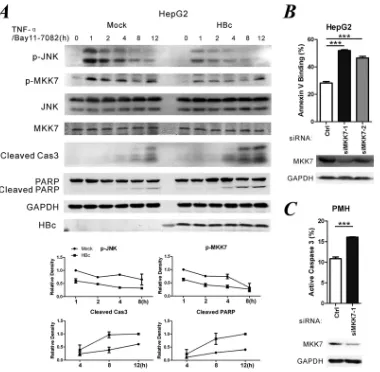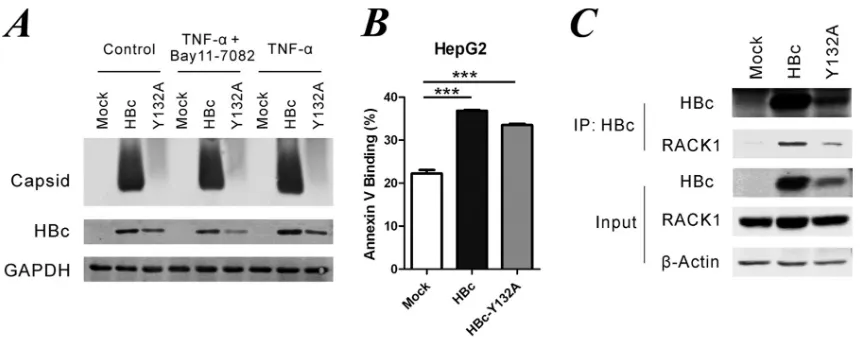Hepatitis B Virus Core Protein Sensitizes Hepatocytes to Tumor Necrosis Factor-Induced Apoptosis by Suppression of the Phosphorylation of Mitogen-Activated Protein Kinase Kinase 7
Full text
Figure




Related documents
The present study was aimed to determine the effect of PON1-ARE activity and the Q/R 192 gene polymorphism on ischemic vascular disease namely coronary artery disease and
attractive line (Nguyen and Pallottino, 1988) that they can board.. only if its remaining travel time to destination is shorter than the sum of waiting time plus travel time upon
rectum, anal canal get blood supply via middle, inferior rectal artery of.. internal iliac artery, internal
reconstruction in 64 patients operated during the period of June 99- March 2000, ( 32patients underwent reconstruction using bone-patellar tendon bone graft and 32patients
We found that the a p60 serum reveals nuclear and nucleolar concentrations of antigens in all the human cell lines tested and in two rat and mouse hepatoma cell lines derived from
the genomic sequence between them, were amplified from naturally infected horse brain RNA and compared with se- quence from virus propagated in experimental systems.. p40 cDNA
Neonatal mice inoculated with 2 x 105 FFU of the Wa strain of human rotavirus showed no evidence of infection and no detectable serum rotavirus IgG response by 24 days
Hybridiza- tion with the DNAs of human papilloma virus types 1, 2, 3, 4, 5, and 8 showed no homology under stringent hybridization conditions.. Human papilloma virus type 6



